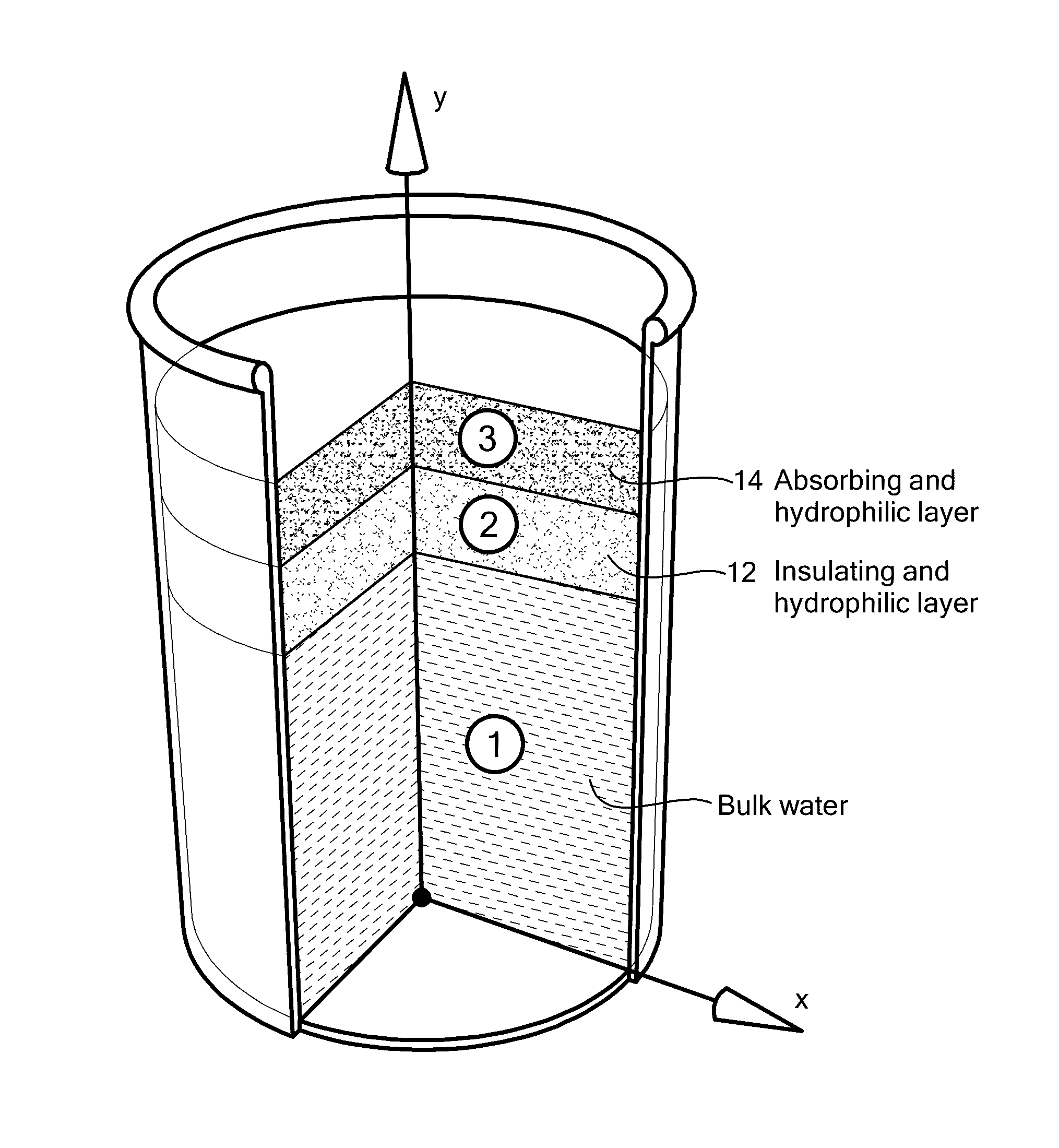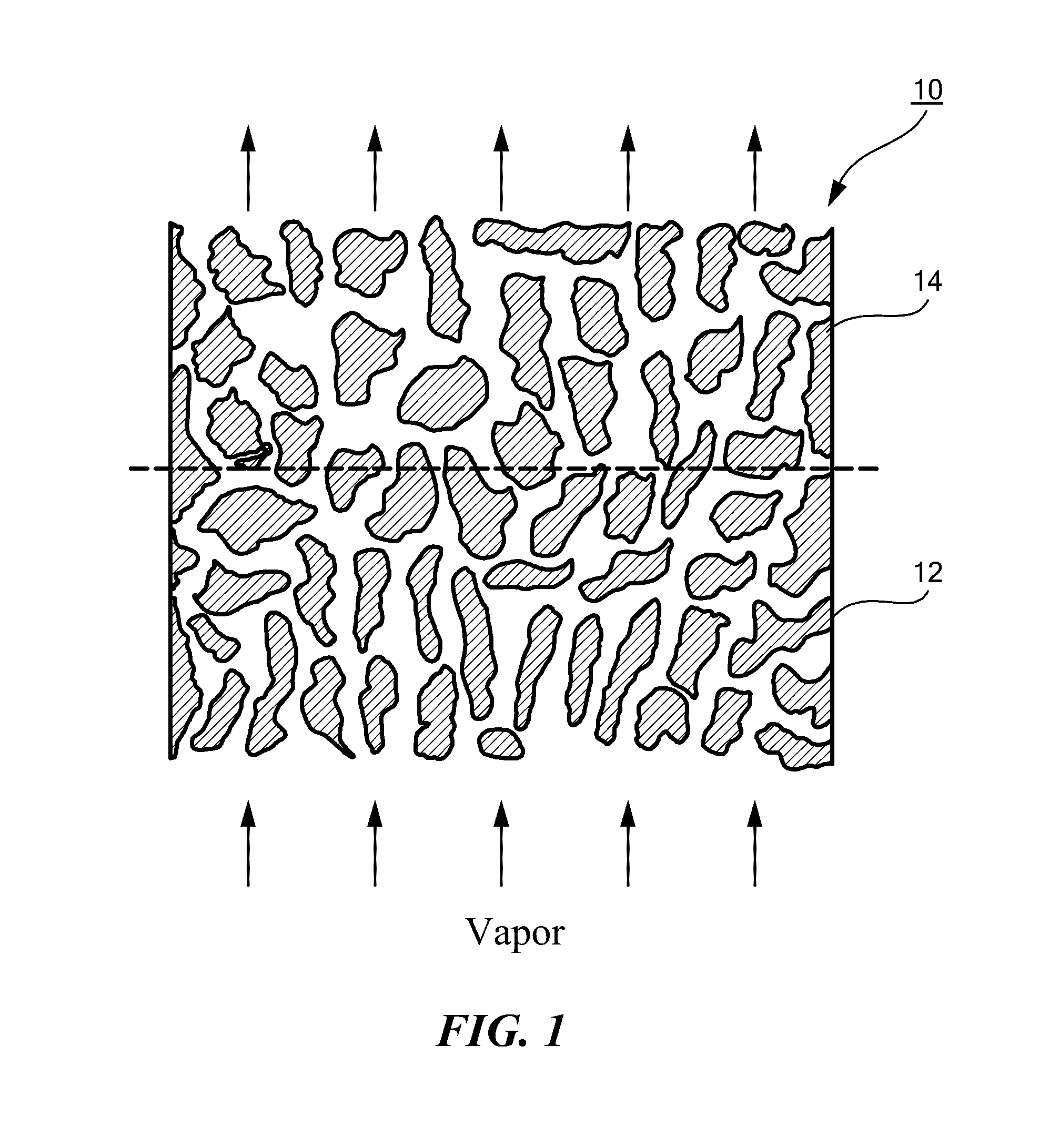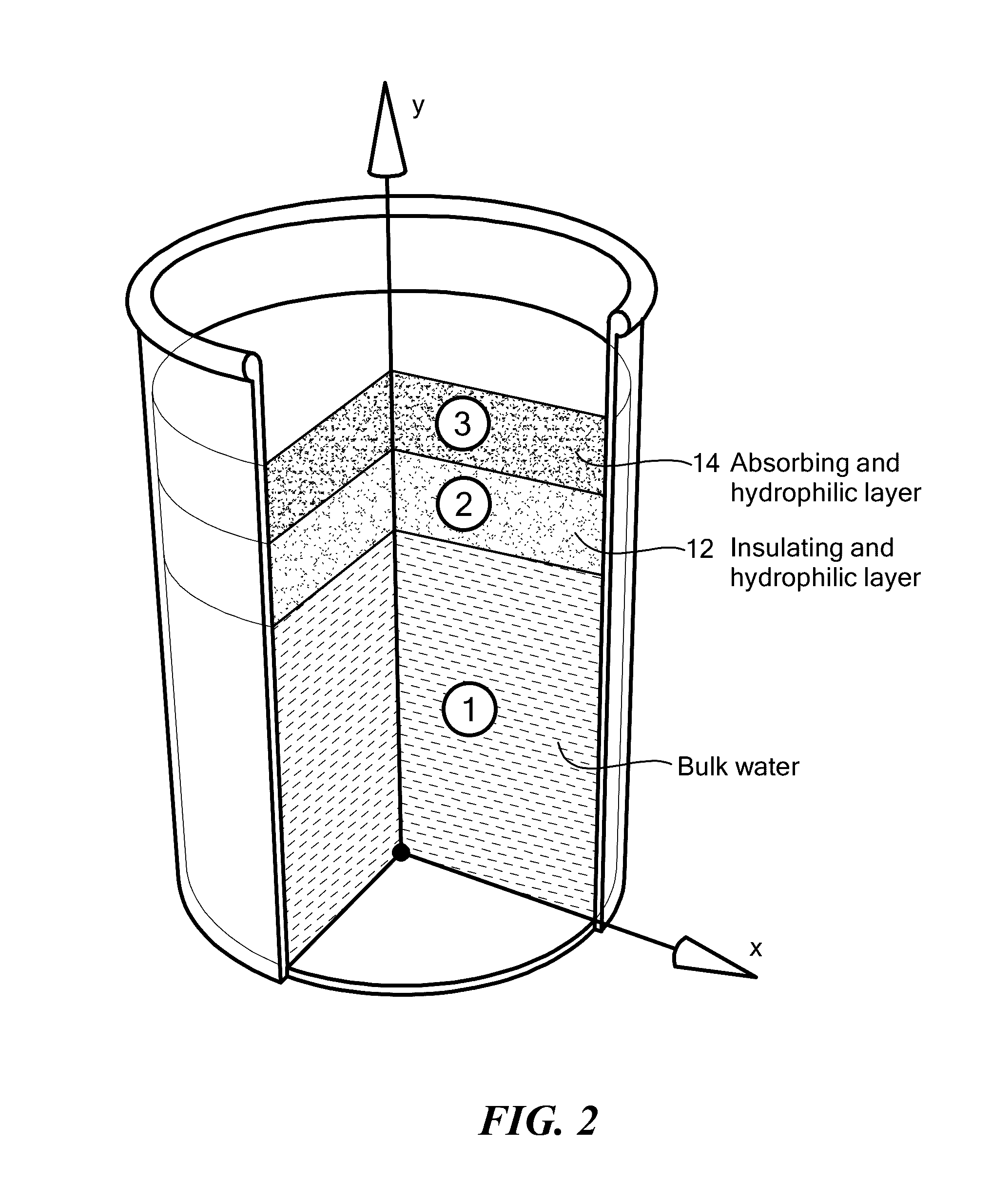Localized Solar Collectors
a solar collector and localized technology, applied in the field of structures that promote localized heating, can solve the problems of high heat loss by convection, add complexity and cost to the solar energy harvesting system, and limit the application of low and medium temperature to small-scale residential and commercial us
- Summary
- Abstract
- Description
- Claims
- Application Information
AI Technical Summary
Benefits of technology
Problems solved by technology
Method used
Image
Examples
example 1
[0072]FIG. 8A shows the energy balance and heat transfer processes involved in a floating solar steam generator, including radiative and convective heat loss to the ambient and conductive and radiative heat loss to the underlying water, for a blackbody solar receiver operating at 100° C. The 1000 W / m2 delivered by the ambient solar flux is not enough to sustain the heat losses, and a 100° C. equilibrium temperature cannot be reached. FIG. 8B shows the energy balance and heat transfer processes in the heating structure shown in FIG. 8C according to embodiments of the present invention. FIG. 8C is a photograph of a heating structure 30 including a spectrally-selective solar absorber 34 having a spectrally-selective coating on a copper substrate to suppress radiative losses and to thermally concentrate heat to the evaporation region. The convective cover 36 includes a thermally insulating bubblewrap cover that transmits sunlight and minimizes convective losses. Slots were cut in the bu...
example 2
[0073]FIGS. 9A-9D show a lab-scale heating structure 30. Low-cost commercial materials were used to construct the heating structure 30, and even cheaper materials may be substituted for specific applications, e.g., using alternative selective coatings or replacing the copper film with an aluminum foil. The spectrally-selective solar absorber 34 was formed from a cermet (BlueTec eta plus) coated on a thermally-conductive copper substrate, as shown in FIGS. 9A and 9B. The spectrally-selective solar absorber 34 solar absorptance (α=0.93) and emittance at 100° C. (∈=0.07) were both measured. The thermal conductivity of copper is estimated to be 400 W / mK. The thermally insulating layer 32 was constructed from a polystyrene foam disk, as shown in FIGS. 9B and 9C, which is a thermal insulator (k=˜0.03 W / m-K) and serves to float the entire structure on a body of water, and limits the thermal conduction and radiation to the cool water underneath. A channel 38 was drilled through the foam, an...
example 3
[0074]To understand and quantify the dependence of evaporation heat transfer coefficient on the area of evaporation, the evaporation rate per area was experimentally measured for various evaporation layer 42 surface areas. These evaporation surfaces were created using a cotton fabric and shaped as circles with diameters from 4 mm to 24 mm. The evaporation heat transfer coefficient studies were carried out using small containers filled with water, such as shown in FIG. 10B. The evaporation layer 42 was formed from a cotton fabric that wicked the water to the surface to ensure good water-air contact for evaporation. The evaporation heat transfer coefficients were measured, and the results are shown in FIG. 10A. FIG. 10B shows the experimental set up for an evaporation layer 42 surface area of 24 mm. As shown in FIG. 10A, for smaller evaporation layer 42 areas, the evaporation heat transfer coefficient increases drastically, taking advantage of the better vapor diffusion geometries.
PUM
| Property | Measurement | Unit |
|---|---|---|
| wavelengths | aaaaa | aaaaa |
| temperature | aaaaa | aaaaa |
| reflectance | aaaaa | aaaaa |
Abstract
Description
Claims
Application Information
 Login to View More
Login to View More - R&D
- Intellectual Property
- Life Sciences
- Materials
- Tech Scout
- Unparalleled Data Quality
- Higher Quality Content
- 60% Fewer Hallucinations
Browse by: Latest US Patents, China's latest patents, Technical Efficacy Thesaurus, Application Domain, Technology Topic, Popular Technical Reports.
© 2025 PatSnap. All rights reserved.Legal|Privacy policy|Modern Slavery Act Transparency Statement|Sitemap|About US| Contact US: help@patsnap.com



